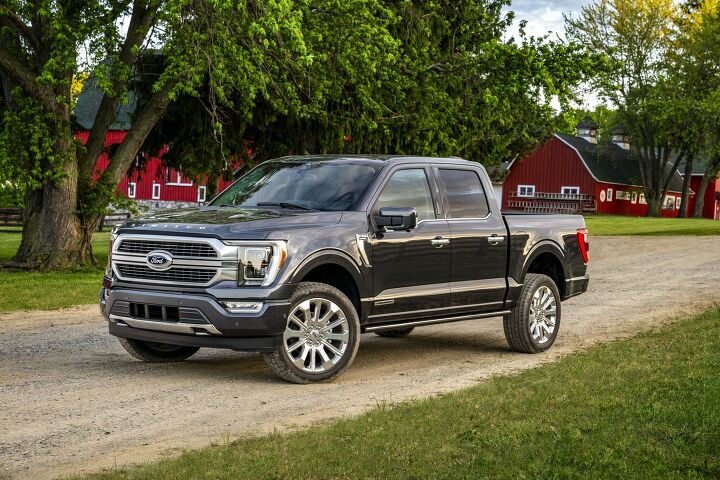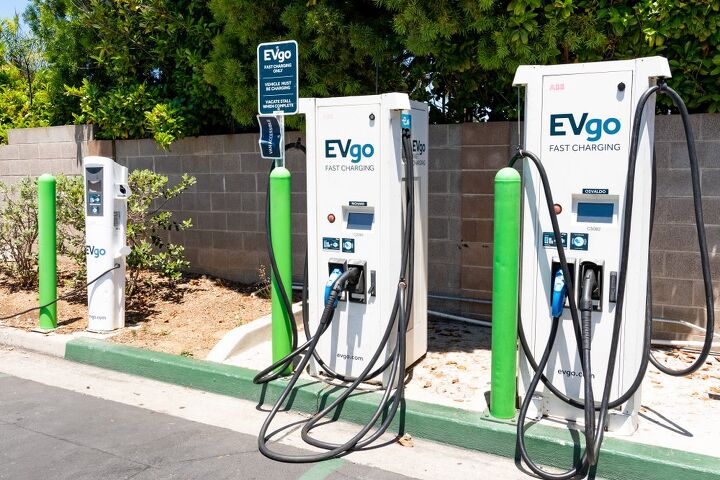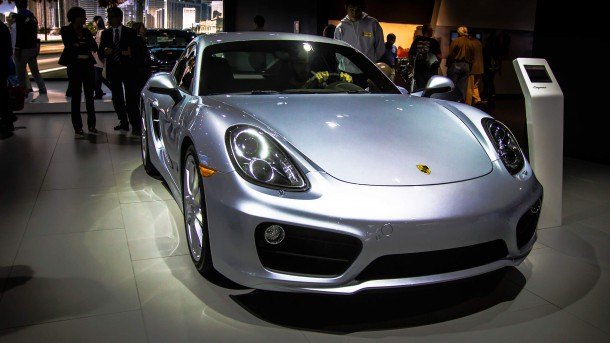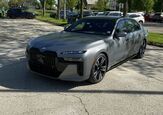#Study
Axios Says Trucks Are Big, Also Confirms Water is Wet
In a report which will surprise no American blessed with the gift of sight, a new report from the eggheads at Axios is the latest to exhort that today’s pickup trucks are just too damn big. To be clear, the study does a good job of breaking down some of the details but, as you’ll see after the jump, some of their illustrations may be a bit off the mark
Study: America Allegedly Needs to Quadruple EV Chargers by 2025
The United States is in the midst of expanding its electric vehicle charging network to ensure there’s sufficient charging capacity for the planned deluge of EV sales. Companies are even getting government money earmarked within the so-called Inflation Reduction Act to ensure that the Biden administration’s lofty environmental goals are maintained. However, a recent report by S&P Global Mobility has suggested the U.S. is nowhere near on pace to meet projected EV demand.
Where Are People Waiting the Longest to Buy a New Car?
Nobody should envy car shoppers right now. With production shortages ongoing, there’s never anything you want on the lot, and what is there is likely to be grotesquely overpriced.
This has encouraged consumers to wait longer before replacing their current ride, which is statistically likely to be far older than years past. But not everyone has the same level of patience or financial wellbeing, meaning certain parts of the country are seeing longer intervals between cars than others. There are also regional inventory disparities to account for, encouraging analytics firm Growth from Knowledge (GfK) to conduct an investigation into which parts of the United States are waiting for the longest to procure a new automobile.
Study Suggests EVs Cost More to Service
One of the reasons electric vehicles have been so polarizing is down to the near-constant proclamations that they’re the superior mode of transportation. But truth is usually a mixed bag and spending some time with EVs has shown them to have some serious blind spots that will need to be addressed if they’re ever to supplant internal combustion vehicles. Electrics aren’t always the better option, though they do boast features that make them extra desirable to some.
Among those was the promise that owning an EV yielded lower maintenance costs. But there’s a new study out claiming that’s not entirely true. Data is pointing to electrics actually having average servicing fees higher than traditional automobiles.
Getting Back to Normal? Far From It - U.S. Rife With Gloomy Consumers, Young Car Buyers Lowering Their Expectations
Consumer spending and confidence are not hitting record highs. Go figure. As the pandemic rages and a vast swath of formerly gainfully employed Americans find their financial future much hazier then before, new car sales are suffering. It doesn’t bode well for sales volume during the remainder of the year.
Of course, that pain is not spread evenly among all automakers, but let’s set the OEMs’ concerns aside for a moment. What are actual buyers and doing — and thinking?
Recent Study Claims Driving Makes You Dumber Over Time
Researchers at the University of Leicester claim that spending several hours behind the wheel every day can adversely affect the human brain — sending the IQ scores of middle-aged Brits into the gutter.
In the experiment, researchers examined the lifestyles of over than 500,000 British residents between 37 and 73 for over five years, giving them routine intelligence and memory assessments. Those who drove more than two to three hours a day typically had lower brainpower at the beginning of the study, which continued to decline at a faster rate than those who did little to no driving.
Allow me to rephrase that for those of you with an exceptionally long daily commute: U.K. smart scientists say driving a whole bunch maybe makes you stupider.
Uh Oh, Your Car's Worth Less Than You Owe - What Comes Next?
Years back, after the desire to purchase one particularly fetching model became too great, you walked into the dealership, marched right over to the salesman’s cubbyhole, and signed over several years’ worth of payments on your ride du jour. Bliss ensued.
Unfortunately, come trade-in time, your once-desirable ride isn’t even worth the amount left owing. You’re in negative equity, pardner. Still, buyers faced with this situation have a number of options at their disposal.
Thanks to a recent study of new car buyers, we now know exactly how owners of low-value trade-ins chose to deal with their unexpected debt.
Overall Vehicle Dependability Down Thanks to Newfangled Gizmos, Apparently
Perhaps we’ve finally hit a point where the old ways actually are the best. Gizmo-centric problems seem more important than ever to J.D. Power and Associates in this year’s dependability ranking, which examined problems experienced over the last 12 months on three-year-old vehicles and highlighted electronic accessories as a major issue.
So, a car that has a rock-solid drivetrain still might not make the grade due to a wonky multimedia system. A good example of this was J.D. Power’s chosen pickup, the Ford F-150. While the Ford achieved top marks for the quality of its interior, exterior, and electrics, the Toyota Tundra possessed vastly superior powertrain reliability.
It’s a similar story with the minivan segment. While the Toyota Sienna was given the crown, the Chrysler Town & Country actually had fewer reported problems in every area except the powertrain — and even that was still rated above average. It makes you wonder how much of the long-term quality being tested here is influenced by J.D. Power’s initial quality categories, which it splits into separate mechanical and “design” groups.
When is the Best Time to Buy a Used Car? Right Now
If you fancy yourself an automotive bargain hunter, the best time to score a deal on a used car is right around the corner. So, stop clicking around on Autotrader for five minutes and equip yourself with some useful knowledge to better your odds of snagging some savings.
Driverless Cars Are Coming, But Will Cities Be Ready?
Probably not.
According to a study by the National League of Cities, only 6 percent of future city plans consider the potential impact autonomous vehicles will have in the next few years, including driverless car lanes and scaling back parking as ride-share services become more popular.
The study collected transportation plans of the 50 biggest U.S. cities, as well as the most-populous cities in every state. In all, 69 city plans were amassed and studied for future traffic and road plans.
Despite automakers rushing to put autonomous cars on the road by 2020, the study suggests that many cities won’t be able to adequately accommodate those cars, nor will they adapt fast enough to changing transportation modes that may challenge conventional public transportation and infrastructure wisdom.
Who Reads The Instruction Manual? (Update: No One)
J.D. Power and Associates on Tuesday released its study of in-car technology that showed many new car buyers either don’t use features available on their car or aren’t aware they exist.
According to the study, at least 20 percent of buyers haven’t used 16 of 33 features targeted by the study, including in-vehicle concierge services such as OnStar (43 percent); mobile Internet connectivity (38 percent); automatic parking aids (35 percent); heads-up displays (33 percent); and apps (32 percent).
Owners said their smartphones probably do all those things better, and who has time to learn systems when you have to text and drive anyway?
Wait a Second Before You Invest Any More Energy in J.D. Power
There’s a considerable need for independent research and analysis, especially when it comes to cars.
But I have something to tell you about J.D. Power and Associate’s annual Automotive Performance, Execution and Layout study: it’s remarkably flawed.
J.D. Power Ranks Porsche Most Appealing for 11th-straight Year
For the 11th-consecutive year, Porsche topped J.D. Power and Associate’s Automotive Performance, Execution and Layout (APEAL) study, which measures owners’ satisfaction with their new car.
The study surveyed 84,000 new car owners 90 days after their purchase to determine their satisfaction with their purchase. Porsche topped the list, just ahead of Jaguar, BMW, Mercedes-Benz, Audi and Land Rover.
So in other words, “Owners Pumped About Paying A Lot for Really Nice Cars.”
Study: Men Prefer Brighter, Bolder Car Colors More Than Women
A recent study by iSeeCars.com shows men prefer brighter, bolder car colors — orange, brown and yellow — compared to women, who preferred more neutral colors such as gold, silver and beige. The study analyzed more than 25 million used cars and 200,000 shoppers.
Orange was the big polarizer for 2014; men were 25 percent more likely to pick that color than women. Last year’s popular picks for men, red and black, fell out of the top three this year in favor of brown and yellow.
Women’s picks of gold, silver and beige may have more to do with the segment in which females traditionally shop. iSeeCars said men’s interest in muscle cars can help explain the palette preferences.
Weekend News Round-up: 2016 Mazda MX-5 Reviews, Lane-Splitting is Safer and Aston Martin Going Electric
Surprise! TTAC didn’t have a single writer at the Mazda MX-5 media preview. Instead, here’s a few different reviews of Japan’s favorite roadster from other outlets and a run-down of what you may have missed over the weekend.




























Recent Comments